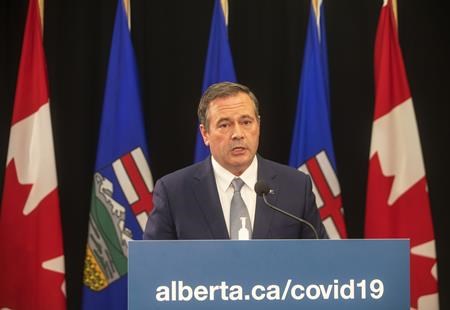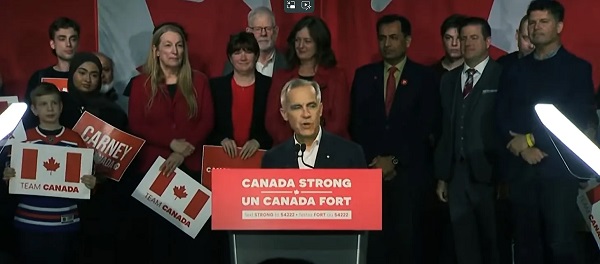Alberta
Vaccine Mandate ends in Alberta tonight at midnight!

From the Province of Alberta
Alberta takes steps to safely return to normal
Provincewide public health measures will be gradually lifted as the fifth wave of COVID-19 subsides and pressure on the health-care system eases.
Alberta will begin a careful and prudent plan to phase out public health measures, starting Feb. 8. The three-step approach will begin with lower-risk activities while maintaining protections for the health-care system, including continuing care facilities.
Beginning Feb. 8 at 11:59 p.m., Alberta will move to step one, which includes the removal of the Restrictions Exemption Program and capacity limits on venues under 500 capacity, including libraries and places of worship, and allows for food and beverage consumption in seated audience settings for large events and entertainment venues. Mandatory masking for children and youth in schools, and for youth aged 12 and under in any setting will end Feb. 13 at 11:59 p.m.
“The last two years have taken a significant toll on Albertans’ overall health, social and economic well-being. Now that we are through the worst of the fifth wave and have achieved high vaccination rates, it is time to shift to a balanced approach where we are able to live with COVID-19 and return to normal.”
“The vast majority of Albertans are now fully vaccinated. It’s a major factor that now allows us to ease restrictions, but we will do so only as conditions show that our health system’s capacity is recovering. Albertans can help make that possible by getting every vaccine dose they are eligible for.”
Subsequent steps will see changes to working from home, masking requirements, large venue capacity limits and indoor social gathering limits, with a final step removing isolation requirements and COVID-specific measures in continuing care settings. The lifting of restrictions will progress once pressures on the health-care system have sufficiently eased.
Step one
Effective Feb. 8 at 11:59 p.m.:
- Restrictions Exemption Program (REP) ends, along with most associated restrictions.
- Entertainment venues will continue to have some specific rules in place:
- Restrictions on sale of food and beverages and consumption while seated in audience settings will be removed.
- Restrictions on closing times, alcohol service, table capacity in restaurants and interactive activities will remain in force.
- For all businesses, venues and facilities – whether they were previously eligible for the REP or not – capacity limits are removed, except for:
- Facilities with capacity of 500 to 1,000, which will be limited to 500.
- Facilities with capacity of 1,000-plus, which will be limited to 50 per cent.
Effective at 11:59 p.m. on Feb. 13:
- Masks will no longer be required for all children and youth in schools.
- Masks will no longer be required in any setting for children aged 12 and under.
Step two
Effective March 1:
- Any remaining provincial school requirements (including cohorting) will be removed.
- Screening prior to youth activities will no longer be required.
- Capacity limits will be lifted for all venues.
- Limits on social gatherings will be removed.
- Provincial mask mandate will be removed.
- Mandatory work from home removed.
Step three
To be determined based on hospitalization rates continuing to trend downwards
- COVID-specific measures in continuing care will be removed.
- Mandatory isolation becomes a recommendation only.
Additional details on all restrictions and measures in place will be released prior to each step at alberta.ca/CovidMeasures.
Alberta
Made in Alberta! Province makes it easier to support local products with Buy Local program

Show your Alberta side. Buy Local. |
When the going gets tough, Albertans stick together. That’s why Alberta’s government is launching a new campaign to benefit hard-working Albertans.
Global uncertainty is threatening the livelihoods of hard-working Alberta farmers, ranchers, processors and their families. The ‘Buy Local’ campaign, recently launched by Alberta’s government, encourages consumers to eat, drink and buy local to show our unified support for the province’s agriculture and food industry.
The government’s ‘Buy Local’ campaign encourages consumers to buy products from Alberta’s hard-working farmers, ranchers and food processors that produce safe, nutritious food for Albertans, Canadians and the world.
“It’s time to let these hard-working Albertans know we have their back. Now, more than ever, we need to shop local and buy made-in-Alberta products. The next time you are grocery shopping or go out for dinner or a drink with your friends or family, support local to demonstrate your Alberta pride. We are pleased tariffs don’t impact the ag industry right now and will keep advocating for our ag industry.”
Alberta’s government supports consumer choice. We are providing tools to help folks easily identify Alberta- and Canadian-made foods and products. Choosing local products keeps Albertans’ hard-earned dollars in our province. Whether it is farm-fresh vegetables, potatoes, honey, craft beer, frozen food or our world-renowned beef, Alberta has an abundance of fresh foods produced right on our doorstep.
Quick facts
- This summer, Albertans can support local at more than 150 farmers’ markets across the province and meet the folks who make, bake and grow our food.
- In March 2023, the Alberta government launched the ‘Made in Alberta’ voluntary food and beverage labelling program to support local agriculture and food sectors.
- Through direct connections with processors, the program has created the momentum to continue expanding consumer awareness about the ‘Made in Alberta’ label to help shoppers quickly identify foods and beverages produced in our province.
- Made in Alberta product catalogue website
Related information
Alberta
Province to expand services provided by Alberta Sheriffs: New policing option for municipalities

Expanding municipal police service options |
Proposed amendments would help ensure Alberta’s evolving public safety needs are met while also giving municipalities more options for local policing.
As first announced with the introduction of the Public Safety Statutes Amendment Act, 2024, Alberta’s government is considering creating a new independent agency police service to assume the police-like duties currently performed by Alberta Sheriffs. If passed, Bill 49 would lay additional groundwork for the new police service.
Proposed amendments to the Police Act recognize the unique challenges faced by different communities and seek to empower local governments to adopt strategies that effectively respond to their specific safety concerns, enhancing overall public safety across the province.
If passed, Bill 49 would specify that the new agency would be a Crown corporation with an independent board of directors to oversee its day-to-day operations. The new agency would be operationally independent from the government, consistent with all police services in Alberta. Unlike the Alberta Sheriffs, officers in the new police service would be directly employed by the police service rather than by the government.
“With this bill, we are taking the necessary steps to address the unique public safety concerns in communities across Alberta. As we work towards creating an independent agency police service, we are providing an essential component of Alberta’s police framework for years to come. Our aim is for the new agency is to ensure that Albertans are safe in their communities and receive the best possible service when they need it most.”
Additional amendments would allow municipalities to select the new agency as their local police service once it becomes fully operational and the necessary standards, capacity and frameworks are in place. Alberta’s government is committed to ensuring the new agency works collaboratively with all police services to meet the province’s evolving public safety needs and improve law enforcement response times, particularly in rural communities. While the RCMP would remain the official provincial police service, municipalities would have a new option for their local policing needs.
Once established, the agency would strengthen Alberta’s existing policing model and complement the province’s current police services, which include the RCMP, Indigenous police services and municipal police. It would help fill gaps and ensure law enforcement resources are deployed efficiently across the province.
Related information
-

 2025 Federal Election20 hours ago
2025 Federal Election20 hours agoMEI-Ipsos poll: 56 per cent of Canadians support increasing access to non-governmental healthcare providers
-

 2025 Federal Election12 hours ago
2025 Federal Election12 hours agoRCMP Whistleblowers Accuse Members of Mark Carney’s Inner Circle of Security Breaches and Surveillance
-

 2025 Federal Election1 day ago
2025 Federal Election1 day agoAI-Driven Election Interference from China, Russia, and Iran Expected, Canadian Security Officials Warn
-

 2025 Federal Election1 day ago
2025 Federal Election1 day agoEuthanasia is out of control in Canada, but nobody is talking about it on the campaign trail
-

 Health20 hours ago
Health20 hours agoTrump admin directs NIH to study ‘regret and detransition’ after chemical, surgical gender transitioning
-

 illegal immigration1 day ago
illegal immigration1 day agoDespite court rulings, the Trump Administration shows no interest in helping Abrego Garcia return to the U.S.
-

 2025 Federal Election1 day ago
2025 Federal Election1 day agoConservative MP Leslyn Lewis warns Canadian voters of Liberal plan to penalize religious charities
-

 COVID-192 days ago
COVID-192 days agoCOVID virus, vaccines are driving explosion in cancer, billionaire scientist tells Tucker Carlson






